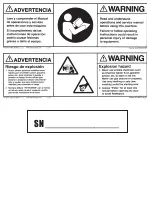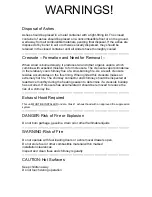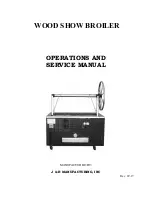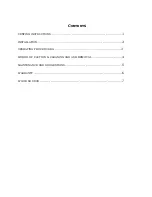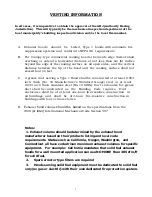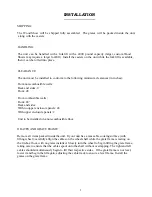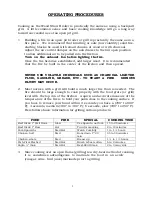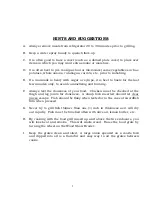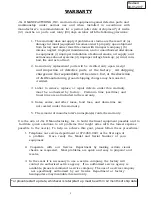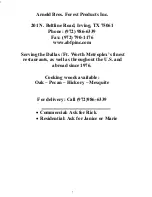
VENTING INFORMATION
B. For Canopy-type commercial cooking hoods the inside edge thereof shall
overhang or extend a horizontal distance of not less than six (6) inches
beyond the edge of the cooking surface on all open sides, and the vertical
distance between the lip of the hood and the cooking surface shall not
exceed four (4) feet.
In all cases, it is imperative to obtain the approval of the AHJ (Authority Having
Jurisdiction). This will typically be the mechanical inspection department of the
local municipality’s building inspection division and/or the local fire marshal.
C. A grease duct serving a Type 1 Hood shall be constructed of at least 0.05
4
inch thick (No. 16 Manufacturer’s Standard Gauge
)
s
teel or at least
0.04
3
inch thick stainless steel
(No. 18 MSG). D
uct enclosures for grease
duct shall be constructed as the Building Code requires. Duct
enclosures shall be of at least one-hour fire-resistive construction in
all
buildings and shall be of
2-hour fire-resistive construction in
buildings with four or more stories.
1
Notes :
1. Exhaust volume should be determined by the exhaust hood
manufacturer based on their products listing and local code
requirements. States such as California, Oregon, Washington, and
Connecticut all have code driven maximum exhaust volumes for specific
equipment. For example: California mandates that solid fuel exhaust
hoods for a wall mounted application can use NO MORE than 385 cfm/lf
for solid fuel.
2.
Spark arrestor type filters are required
3.
Hoods serving solid fuel equipment must be dedicated to solid fuel
only (no gas or electric) with their own dedicated fire protection system.
A.
Exhaust h
oods should be
Liste
d, Type 1 hoods with automatic fire
suppression systems and
conform to NFPA 96
requirements
.
D.
E
xhaust
hood
volume
should be based
on the specifications from the
2
009
(or later)
International Mechanical Code Section 507.


